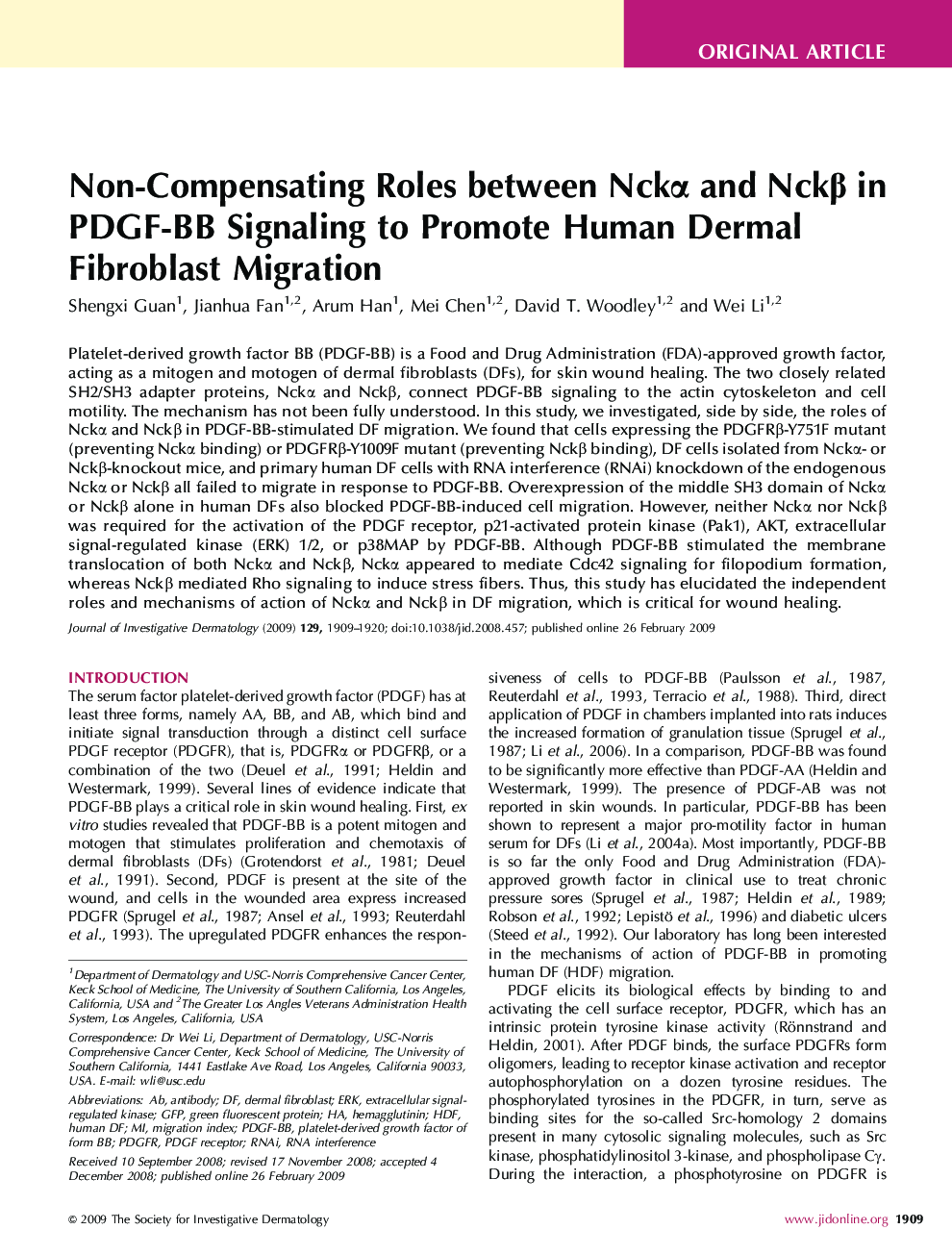| Article ID | Journal | Published Year | Pages | File Type |
|---|---|---|---|---|
| 3216831 | Journal of Investigative Dermatology | 2009 | 12 Pages |
Abstract
Platelet-derived growth factor BB (PDGF-BB) is a Food and Drug Administration (FDA)-approved growth factor, acting as a mitogen and motogen of dermal fibroblasts (DFs), for skin wound healing. The two closely related SH2/SH3 adapter proteins, Nckα and Nckβ, connect PDGF-BB signaling to the actin cytoskeleton and cell motility. The mechanism has not been fully understood. In this study, we investigated, side by side, the roles of Nckα and Nckβ in PDGF-BB-stimulated DF migration. We found that cells expressing the PDGFRβ-Y751F mutant (preventing Nckα binding) or PDGFRβ-Y1009F mutant (preventing Nckβ binding), DF cells isolated from Nckα- or Nckβ-knockout mice, and primary human DF cells with RNA interference (RNAi) knockdown of the endogenous Nckα or Nckβ all failed to migrate in response to PDGF-BB. Overexpression of the middle SH3 domain of Nckα or Nckβ alone in human DFs also blocked PDGF-BB-induced cell migration. However, neither Nckα nor Nckβ was required for the activation of the PDGF receptor, p21-activated protein kinase (Pak1), AKT, extracellular signal-regulated kinase (ERK) 1/2, or p38MAP by PDGF-BB. Although PDGF-BB stimulated the membrane translocation of both Nckα and Nckβ, Nckα appeared to mediate Cdc42 signaling for filopodium formation, whereas Nckβ mediated Rho signaling to induce stress fibers. Thus, this study has elucidated the independent roles and mechanisms of action of Nckα and Nckβ in DF migration, which is critical for wound healing.
Related Topics
Health Sciences
Medicine and Dentistry
Dermatology
Authors
Shengxi Guan, Jianhua Fan, Arum Han, Mei Chen, David T. Woodley, Wei Li,
